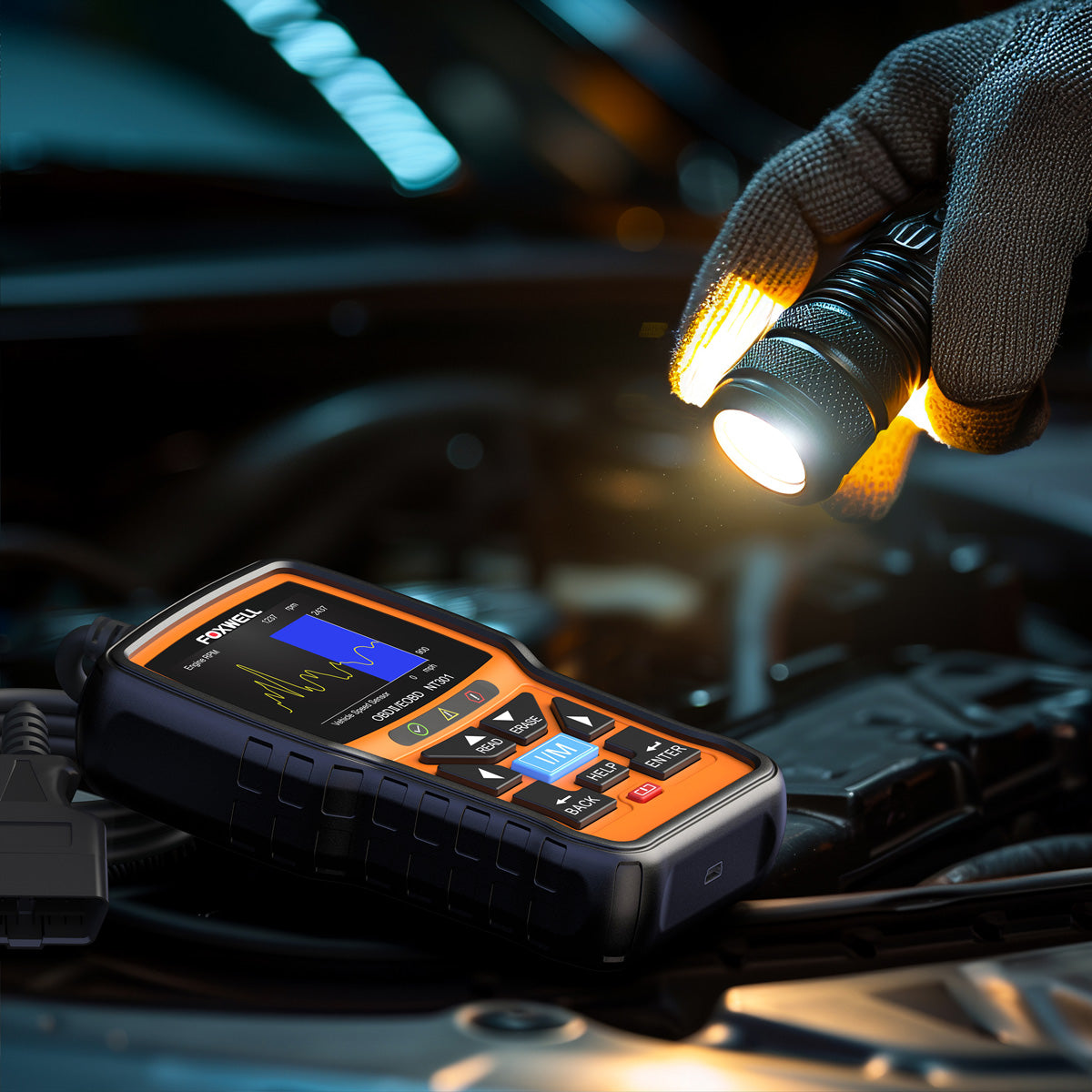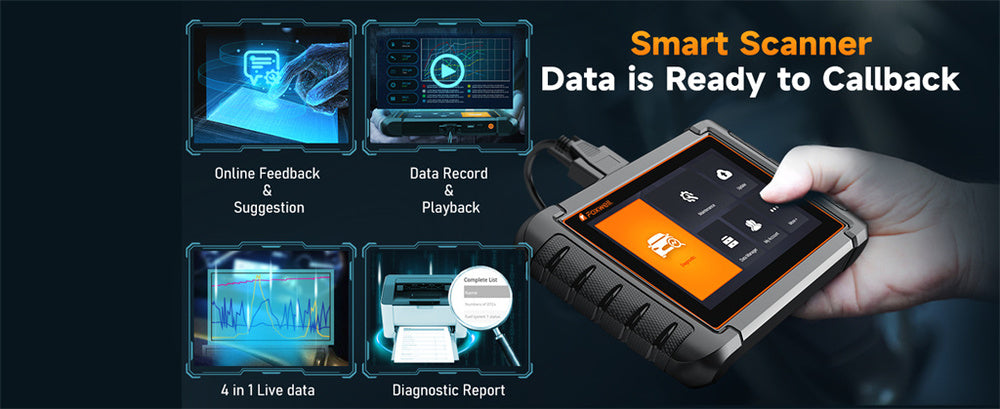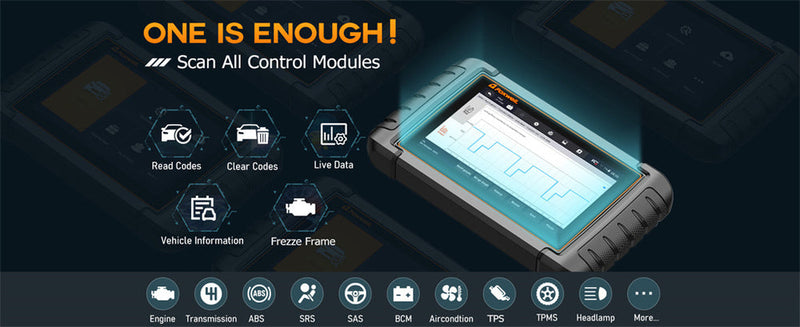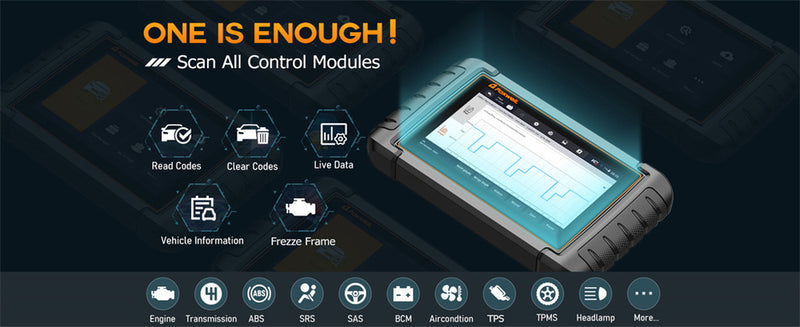Anti-lock Braking Systems (ABS) are vital to driver safety, providing better vehicle control and shorter stopping distances during heavy braking conditions.
Unfortunately, ABS sensors are vulnerable components and may malfunction, leading to error messages, warning lights, or dangerous driving conditions.
We'll walk through using a car scanner effectively to diagnose and troubleshoot ABS sensor issues to keep your car safe and responsive.

Understanding ABS and Its Importance
Anti-lock braking Systems (ABS) have become essential components of modern automotive safety.
Conceived to prevent wheels from locking during hard braking, ABS enables drivers to maintain steering control when driving on slippery surfaces, keeping steering under their own control and increasing driver safety.
How ABS Works?
When an emergency stop occurs, pressing hard on the brake pedal activates ABS, which quickly pumps the brakes to allow traction between the wheel and road surface and maintain grip through sensors located at each wheel that continuously measure wheel speed.
Safety Benefits of ABS
By preventing wheel lock-up, ABS can significantly decrease the risk of skidding and give drivers greater control of their vehicle during emergency braking—especially useful when traction is compromised, such as on wet or icy roads.
Improved Vehicle Handling
Abs enhances vehicle handling and improves safety. Smoother braking experiences and reduced wear-and-tear on brake components contribute to longer brake lifespan and life spans.
Common Signs of ABS Sensor Failure
Its ABS sensors are critical components to the system, yet are susceptible to issues due to their location and purpose.
Recognizing early warning signs of sensor failure is vital in diagnosing problems quickly and avoiding further complications.
Warning Lights: One of the telltale signs of an ABS sensor issue is when your dashboard illuminates with an ABS warning light, with some vehicles also activating their check engine light if their system detects an anomaly.
Braking Issues: Should an ABS sensor malfunction, it can lead to notable variations in the braking pattern—for instance, less responsive brakes or unusually hard pedal pressure regulation could compromise overall braking efficiency.
Unusual Noises: Faulty ABS sensors may cause relays and other system components to operate irregularly, leading to unexpected sounds when braking, such as grinding, buzzing, or clicking noises emanating from the wheel area.
Performance when Braking: Do you notice any pulsations or jerkiness from the brake pedal when applying brakes to stop? Incorrect readings from an ineffective ABS sensor could cause this.
Understanding these fundamental aspects of ABS and being aware of any signs or potential failures will ensure timely maintenance and repairs, keeping your vehicle safe and responsive.
Regular car scanner checks may prevent minor issues from becoming major safety threats.
Effectively Diagnosing ABS Sensor Issues
Utilizing the appropriate diagnostic tool is critical for correctly identifying and rectifying ABS sensor issues, with Foxwell's NT809 Series serving as an ideal example.
The Foxwell NT809 can quickly pinpoint ABS issues for novice users and experienced mechanics alike; its features provide ample assistance. Here's how it can be used effectively:
Selecting an Appropriate Scanner
The Foxwell NT809 is an advanced tool capable of supporting comprehensive ABS system diagnostics.
When selecting the right scanner for this purpose, ensure its capabilities include those necessary to detect ABS faults accurately.
Steps for Connecting the Foxwell NT809 Scanner
- Locate Your Vehicle's OBD2 Port.This port can often be found under the dashboard, near the steering column, or around the driver's seat area.
- Plug In Foxwell NT809 To connect your scanner's interface cable to the OBD2 Port.
- Starting Your Car: To power the OBD2 system, either start the engine or put the key in the "on" position without starting the engine.
Interpreting Scanner Codes
Read ABS Codes: Use an NT809 scanner to identify ABS trouble codes that could indicate issues with ABS sensors, such as signal failure or abnormal readings.
Understand Codes: The NT809 can help you interpret each error code on its intuitive touchscreen display and offers detailed descriptions and troubleshooting solutions for each code relating to ABS systems.
Checking Live ABS Sensor Outputs: The NT809 allows users to monitor each wheel's ABS sensor output live. This feature is invaluable in diagnosing issues that do not consistently generate error codes.
Analyse Data: Carefully review any discrepancies or irregular data generated by sensors during vehicle operation that might suggest malfunctions or misalignments with potential misfire sensors.
Troubleshooting and Confirming Sensor Issues
Physical Inspection: Relying on diagnostic results, conduct a physical inspection of all the indicated sensors for any physical damage or debris that might impede their operation. The NT809's guided diagnostics may assist with pinpointing which one is at fault.
Sensor Replacement: If the scanner continues to show error codes after cleaning and inspecting its sensors, a replacement could be required. After replacing one with an NT809 model sensor, use the scanner's clear error codes feature to clear any remaining issues and ensure everything works as intended with your new sensor.
Troubleshooting and Repairing ABS Sensor Problems
Diagnosing and fixing ABS sensor issues is often achievable with the appropriate approach and tools. Here's a detailed guide on how you can troubleshoot and possibly repair problems related to your vehicle's ABS sensors:
Step-by-Step Troubleshooting
Visual Inspection: Start by visually inspecting each ABS sensor located at every wheel for any signs of damage, such as cracks, dirt, or debris obstructing their ability to read wheel speed accurately. Also, inspect wires and connectors for wear or corrosion that could hinder function.
Cleaning ABS Sensors: Proper cleaning can easily address many problems associated with ABS sensors. Road grime, mud, and metallic debris can clog sensors, sending false signals back to the ABS computer. A cloth and suitable cleaner are ideal for gently cleansing each sensor; avoid harsh materials that might harm its surface.
Check Sensor Alignment: Sensor misalignment can result from impacts or from routine maintenance tasks requiring sensor removal, so ensure each one is correctly positioned and securely fastened before checking its alignment.
Misalignment could cause the sensor readings to mislead you into reading incorrectly, resulting in ABS fault codes being set.
Measuring Sensor Resistance: Use a multimeter to accurately measure the resistance of ABS sensors according to their manufacturer-specified values.
Any deviations in resistance readings could indicate a faulty sensor that needs replacing immediately.
Fixing Common ABS Sensor Issues Replacing Faulty Sensors: When diagnostics reveal a faulty sensor that cannot be fixed through cleaning or realignment, replacement may be the only viable solution.
ABS sensors typically cannot be repaired when they fail and must be removed and replaced when they malfunction.
Disconnect and Replace Sensors: Carefully disconnect the faulty sensor from its connection, taking care not to damage its connector.
Wrench off and unclip, unscrew, or unclip its mounting point before installing your new sensor.
Reconnect and Test: After installing the new sensor, reconnect it to the system, clear any applicable ABS codes and test drive your vehicle to ensure it is functioning as intended and its warning light goes off.
Checking ABS Ring and Sensor Gap: Some vehicles use an ABS sensor that reads an axle or wheel hub ring as a signal source.
Ensure this ring is undamaged, and ensure that its distance from the sensor falls within specifications before making necessary adjustments.

Conclusion
Troubleshooting and fixing ABS sensor issues can often be simple if approached systematically.
Regular maintenance, including cleaning and inspections, can prevent many sensor issues; for more complex problems, using a systematic diagnostic approach followed by careful replacement of components often restores ABS functionality to restore safe driving conditions while upholding vehicle integrity.
FAQs
How Can I Know If My ABS Sensor Is Faulty?
Some signs that your ABS sensor might be malfunctioning include the dashboard warning light flashing red or strange noises from the wheels when braking.
Can I Clean an ABS Sensor Myself?
You can often solve issues by carefully cleaning an ABS sensor to remove dirt, debris, or buildup that might interfere with its readings.
What should I do if cleaning my ABS sensor doesn't solve my issue?
If cleaning doesn't solve it, check the sensor's alignment and wiring; if this still doesn't fix it, replacing it may be necessary.





Leave a comment
This site is protected by hCaptcha and the hCaptcha Privacy Policy and Terms of Service apply.